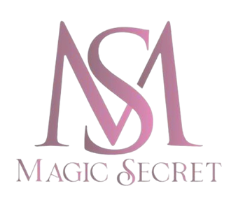Hair thinning is one of the most common concerns faced by both men and women. Stress, hormonal changes, ageing, nutritional deficiencies, and genetics often contribute to reduced hair density and weak follicles. While topical treatments and supplements are popular, a modern non-invasive approach is gaining attention worldwide—red light therapy for hair.
Also known as low-level laser therapy (LLLT), this treatment uses specific wavelengths of red and near-infrared light to stimulate the scalp, promote circulation, and strengthen hair follicles. Many people now turn to LED hair growth devices as an alternative or complementary solution to improve hair density naturally.
In this blog, we’ll explore the science, key benefits, and safety of red light hair growth therapy, along with FAQs to help you decide whether this method could work for you.
How Red Light Therapy Works for Hair Growth
Red light therapy uses wavelengths typically between 630–670 nanometers, which penetrate the scalp to reach hair follicles. These light wavelengths are absorbed by the mitochondria in cells—the powerhouse of the cell—boosting ATP (adenosine triphosphate) production.
The increase in cellular energy improves scalp circulation, reduces inflammation, and helps dormant follicles shift into the active anagen (growth) phase. Over time, this process can encourage stronger, thicker, and healthier hair growth.
Benefits of Red Light Therapy for Thinning Hair
1. Stimulates Hair Follicles
The main advantage of red light therapy hair treatment is its ability to reactivate weakened or dormant follicles. This stimulation improves follicle activity and supports natural hair regrowth.
2. Improves Scalp Circulation
Good blood flow is vital for delivering nutrients and oxygen to hair roots. Red light therapy enhances microcirculation in the scalp, creating a healthier environment for LED light for hair growth results.
3. Reduces Inflammation
Chronic scalp inflammation can contribute to hair thinning. Red light therapy helps reduce oxidative stress and inflammation, which allows follicles to function more effectively.
4. Thickens Existing Hair
Apart from new growth, many users notice their existing strands becoming thicker and stronger with consistent sessions of LED hair growth devices.
5. Non-Invasive and Painless
Unlike surgical hair restoration or chemical-based treatments, red light hair growth therapy is painless, safe, and suitable for at-home use with the right device.
6. Supports Overall Scalp Health
By balancing oil production, soothing irritation, and enhancing hydration, red light therapy improves overall scalp health, which is crucial for long-term hair density.
Who Can Benefit from Red Light Therapy?
-
People with thinning hair or reduced density
-
Men and women with androgenetic alopecia (pattern baldness) in early stages
-
Individuals experiencing stress-related hair fall
-
Those who want a non-invasive alternative to surgery or medications
-
People looking to improve scalp health and circulation
How to Use Red Light Therapy for Hair
Red light therapy can be done in professional clinics or at home using LED hair growth caps, helmets, or handheld devices.
-
Frequency: 3–4 sessions per week (depending on device instructions).
-
Duration: Each session usually lasts 10–20 minutes.
-
Consistency: Visible results often take 3–6 months with regular use.
FAQs on Red Light Therapy for Hair
Q1: Does red light therapy really regrow hair?
Yes, studies show that red light hair growth therapy stimulates follicles, supports regrowth, and strengthens existing hair, especially in people with early hair thinning.
Q2: Is red light therapy safe for the scalp?
Yes, it is non-invasive, painless, and generally safe with minimal to no side effects when used as directed.
Q3: How long does it take to see results?
Most users notice reduced shedding within a few weeks, while visible regrowth typically appears after 3–6 months of consistent use.
Q4: Can I combine red light therapy with other treatments?
Yes. It can be used alongside topical serums, supplements, or medications for improved results. Always consult a healthcare professional before combining treatments.
Q5: What’s the difference between red light therapy and laser hair therapy?
Both work on similar principles, but LED light for hair growth covers a broader scalp area, while lasers provide targeted stimulation.
Final Thoughts
Red light therapy hair treatments offer a promising, safe, and effective solution for those struggling with thinning hair and scalp health issues. By improving follicle activity, boosting circulation, and reducing inflammation, LED hair growth devices can support long-term regrowth and stronger, healthier hair.
While it’s not an overnight fix, consistency is key. With regular use, many people experience noticeable improvements in hair density and quality—making this therapy worth considering.
Disclaimer
This blog is for informational purposes only and should not be considered medical advice. Results from red light hair growth therapy may vary depending on individual conditions. Always consult with a dermatologist, trichologist, or healthcare professional before starting any new hair loss treatment.

